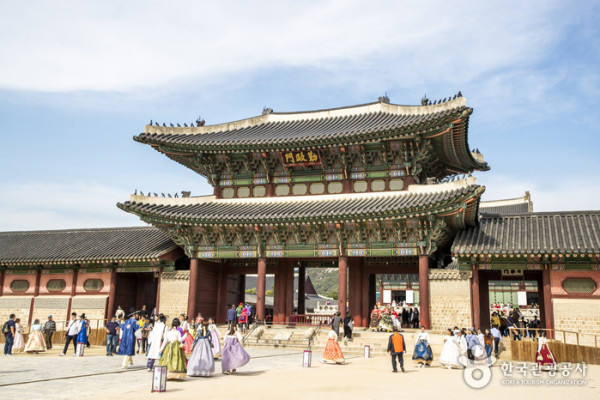Step into History at Gyeongbokgung Palace Step into History at Gyeongbokgung Palace Step into History at Gyeongbokgung Palace

KimchiAdventure…
24-08-26 12:11
136
0
본문
Built in 1395 by Yi Seong-gye, the future King Taejo and founder of the Joseon dynasty, Gyeongbokgung Palace is a stunning piece of Korea's royal heritage!
Known as the Northern Palace due to its location north of Changdeokgung and Gyeonghuigung Palaces, it’s the largest and arguably the most beautiful of the Five Grand Palaces.
This majestic palace was once the site of many Joseon kings' coronations. Though it was devastated by fire during the Imjin War (1592-1598), it was later meticulously restored under Heungseondaewongun during King Gojong’s reign.
Sadly, after the assassination of Empress Myeongseong, Gyeongbokgung lost its role as a royal palace and witnessed the end of the Joseon dynasty.
Today, you can marvel at the original Gyeonghoeru Pavilion, a prime example of Joseon architecture, and enjoy the picturesque Hyangwonjeong Pavilion and its pond.
The sculptures in Geunjeongjeon Hall showcase traditional Joseon-era artistry.
Explore the National Palace Museum of Korea to the west of Heungnyemun Gate, and don’t miss the National Folk Museum of Korea on the eastern side of Hyangwonjeong Pavilion.
Known as the Northern Palace due to its location north of Changdeokgung and Gyeonghuigung Palaces, it’s the largest and arguably the most beautiful of the Five Grand Palaces.
This majestic palace was once the site of many Joseon kings' coronations. Though it was devastated by fire during the Imjin War (1592-1598), it was later meticulously restored under Heungseondaewongun during King Gojong’s reign.
Sadly, after the assassination of Empress Myeongseong, Gyeongbokgung lost its role as a royal palace and witnessed the end of the Joseon dynasty.
Today, you can marvel at the original Gyeonghoeru Pavilion, a prime example of Joseon architecture, and enjoy the picturesque Hyangwonjeong Pavilion and its pond.
The sculptures in Geunjeongjeon Hall showcase traditional Joseon-era artistry.
Explore the National Palace Museum of Korea to the west of Heungnyemun Gate, and don’t miss the National Folk Museum of Korea on the eastern side of Hyangwonjeong Pavilion.
Link copied!

 LANGUAGE
LANGUAGE




Comment list0